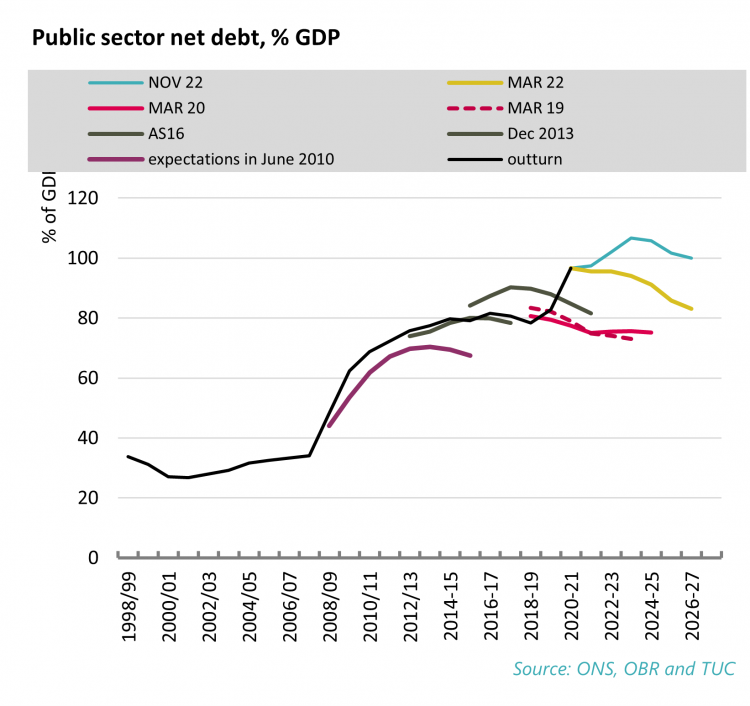From the doom loop to an economy for work not wealth
The failure of the economy and public finances keep in place the imperative for more austerity, and the doom loop keeps turning.
Dr Jo Michell and Dr Rob Calvert Jump and other economists are right to contest the idea of ‘black holes’ as a ‘dangerous fiction’. 1
But according to doom loop analysis above, the danger goes beyond uncertainties around the size of black holes, to the conclusion that policy and the associated assumptions hardwire in repeated downgrading of the trajectory for the economy and so for the public debt ratio.
The chart below shows forecasts for the public debt ratio progressively undermined; the main exception was improvement into 2019, though this was already beginning to reverse in the March Budget just ahead of the pandemic. 2
The step change into 2020-21 follows from the pandemic.
Figure 4: Public sector net debt, % GDP
- 1 ‘The dangerous fiction of the “fiscal black hole”’, Rob Calvert Jump and Jo Michell, 10 Nov. 2022, https://progressiveeconomyforum.com/publications/the-dangerous-fiction-of-the-fiscal-black-hole
- 2 Some improvements in the public debt ratio follow from changes in the definition of public debt; for example housing associations were removed from the figures in 2017 and then later brought back in in 2019 https://www.ons.gov.uk/news/statementsandletters/statementonclassificationofenglishhousingassociationsnovember2017; https://www.ons.gov.uk/economy/governmentpublicsectorandtaxes/publicsectorfinance/adhocs/010280impactofthereclassificationofhousingassociationsintothepublicsector
At each fiscal event the arithmetic of policy interventions and economic forecasts are such that the public debt is set on an improving trajectory after a certain number of years into the future. This permits the government to claim a meaningless success against variously recalibrated fiscal rules, 3
in spite of presiding over a situation that is generally deteriorating.
The vital negative conclusion is that these assumptions (❷❸) must be rejected or the UK economy is condemned to endless failure. The vital positive conclusion is that this underutilised potential continues to exist and can be recaptured.
- 3 ‘Manana targets’ as the head of the OBR put it – BBC 2 Newsnight 17 Nov. 2022.
Stay Updated
Want to hear about our latest news and blogs?
Sign up now to get it straight to your inbox

